What is SEO content?
SEO content is content designed to rank in search engines. It could be a blog post, product or landing page, interactive tool, or something else.
Why is SEO content important?
Not all content ranks and gets traffic from organic search. Only content crafted for searchers about topics they’re searching for does (unless you get lucky).
Crafting SEO content is about giving searchers what they want and making it “sticky.” If you can share unique insights and expertise on top of that, even better. Let’s go through the process in more detail.
1. Choose a proven topic
You should already have a proven topic if you’ve done keyword research. This is something with traffic potential, business potential, and ranking potential.
Here’s a proven topic for a baking supplies store:

It has good business and traffic potential and looks easy to rank for based on its Keyword Difficulty (KD) score.
To find it, we:
- Plugged the seed keyword “bakery” into Ahrefs’ Keywords Explorer
- Checked the Matching Terms report.
- Filtered for keywords with good traffic potential and low KD
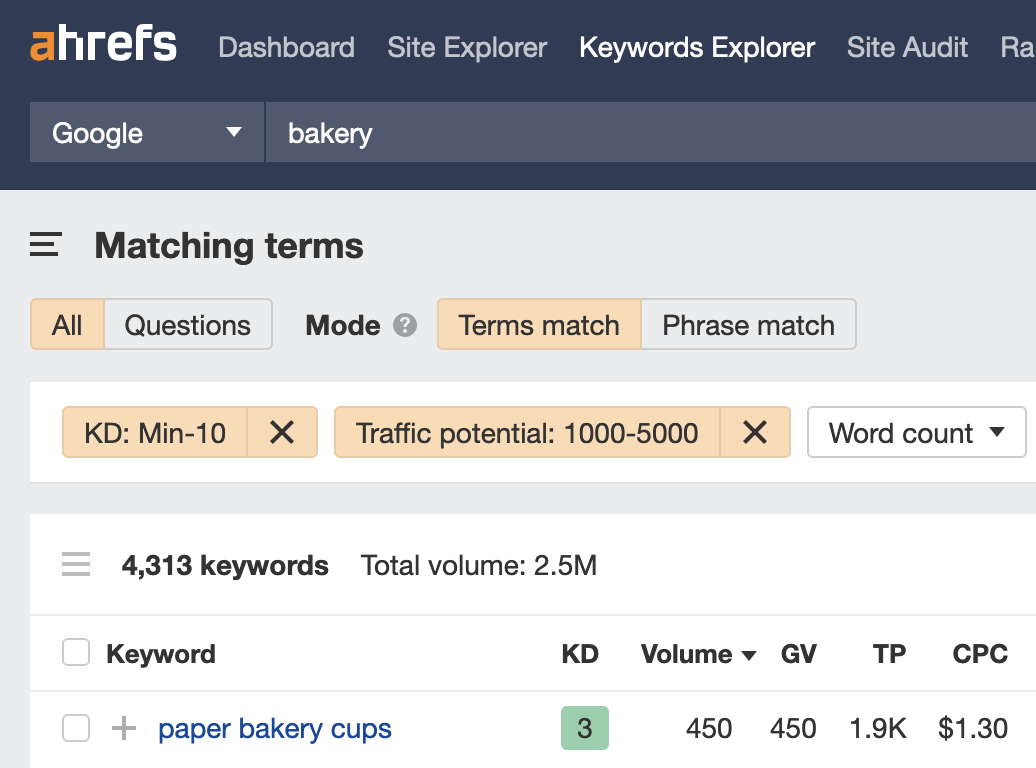
DID YOU KNOW?
Keyword Difficulty (KD) scores in Ahrefs are based on the number of backlinks to the top-ranking pages. It’s a helpful way to refine lists of keywords. Still, it’s always worth investigating ranking difficulty further before pursuing a topic. Learn more in our Keyword Difficulty guide.
Finally, we checked the top-ranking pages and their stats in the SERP overview. As many have few or no backlinks and are from unknown brands, it seems quite a promising keyword.

2. Analyze search intent
Understanding search intent means figuring out what the searcher is looking for. You need to do this because your chances of ranking are slim if your content doesn’t align with it.
The keyword itself often reveals intent. For example, it’s clear that people searching for “SEO tips” want a list of SEO tips. But it’s less obvious for other keywords, so it’s best to use the top-ranking pages as a proxy. In other words, infer intent from what’s already ranking.
To do this, analyze the top-ranking pages for the three Cs:
- Content type. Are they blog posts, product pages, landing pages, or something else?
- Content format. Are they tutorials, listicles, how-to guides, recipes, free tools, or something else?
- Content angle. Is there a dominant selling point, like low prices or how easy it is?
For example, the top results for “neapolitan pizza dough” are all recipe blog posts. And authenticity is the dominant angle.
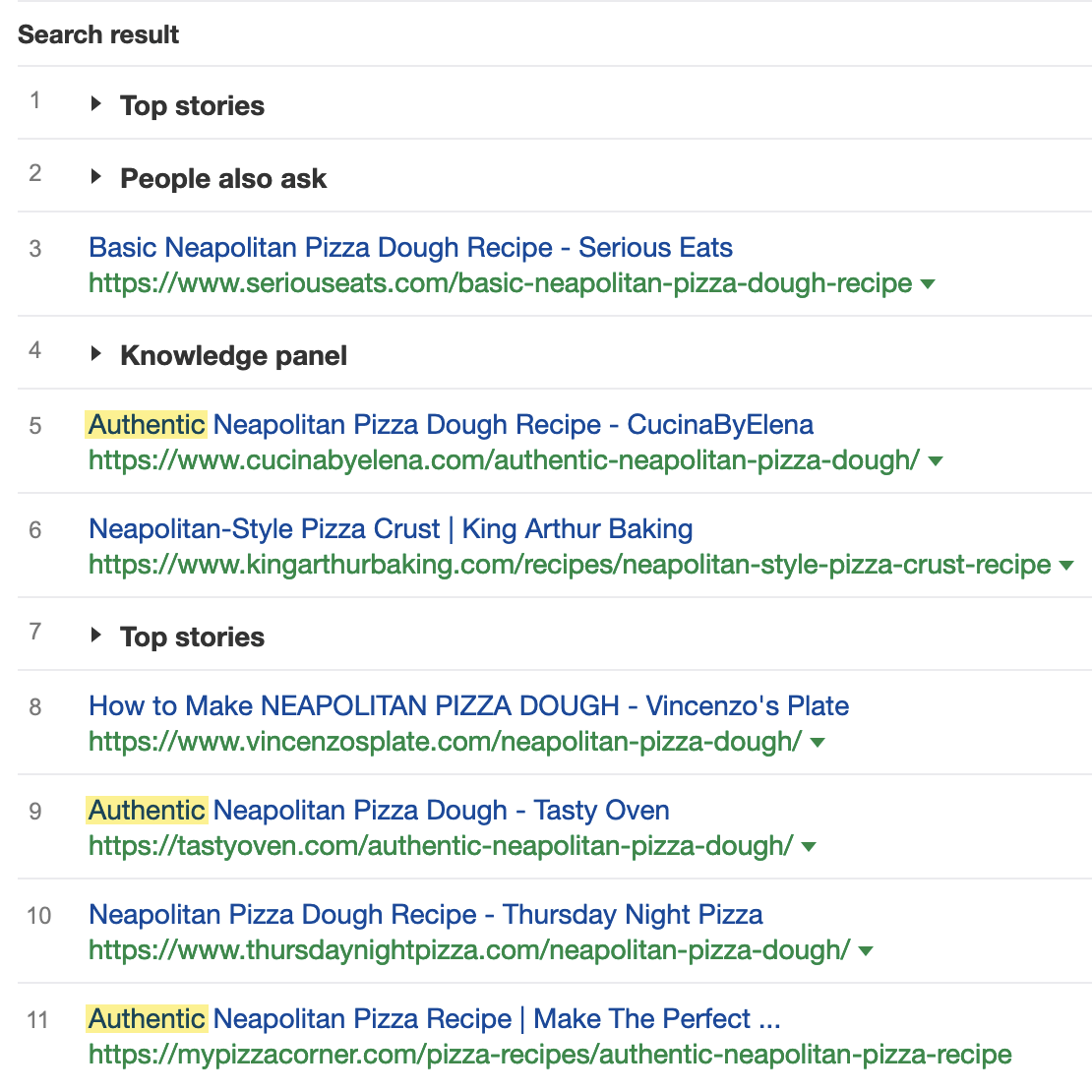
3. Check your expertise
Google uses signals that help determine content that demonstrates expertise.[1] This is more important for topics that could impact a reader’s happiness, health, or wealth. Google calls these Your Money or Your Life (YMYL) topics.
Here’s what Google says about expertise for YMYL and non-YMYL topics:[2]
- Non-YMYL topics. “Everyday expertise” is enough. If the writer has the type and amount of life experience to make them an expert on the topic, you’re good.
- YMYL topics. Formal expertise is important, but “everyday expertise” is enough for some topics. For example, someone with cancer can answer “what is it like to have cancer” better than a doctor.
Use the flowchart below to decide if and how to cover a topic.
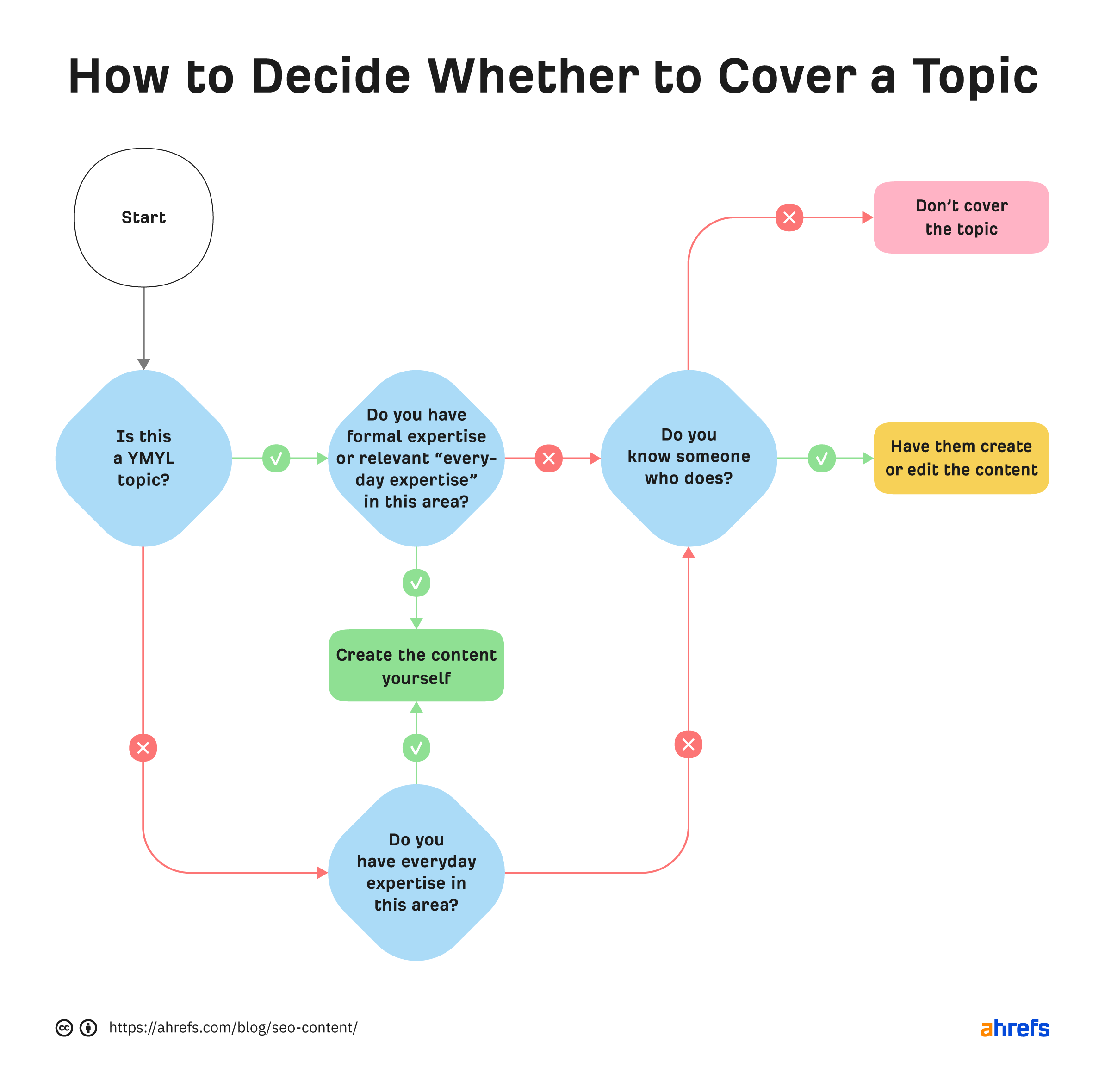
4. Cover the topic in full
If you’ve got expertise covered, it’s time to create the type of content searchers want to see. Analyzing search intent gives you a high-level idea of this, but it doesn’t reveal all. That’s a problem because the best result for a query covers everything searchers want to know.
Here are two ways to find important sub-topics and points to include:
- Look for commonalities among top-ranking pages. Subheadings are often revealing.
- Look for common keyword rankings among top-ranking pages. These often reveal subtopics. And if many are talking about them, they’re likely quite important.
You can use Ahrefs to do the latter:
- Enter your keyword into Ahrefs’ Keywords Explorer
- Select a few relevant top-ranking pages
- Click “Open in” and choose “Content gap”
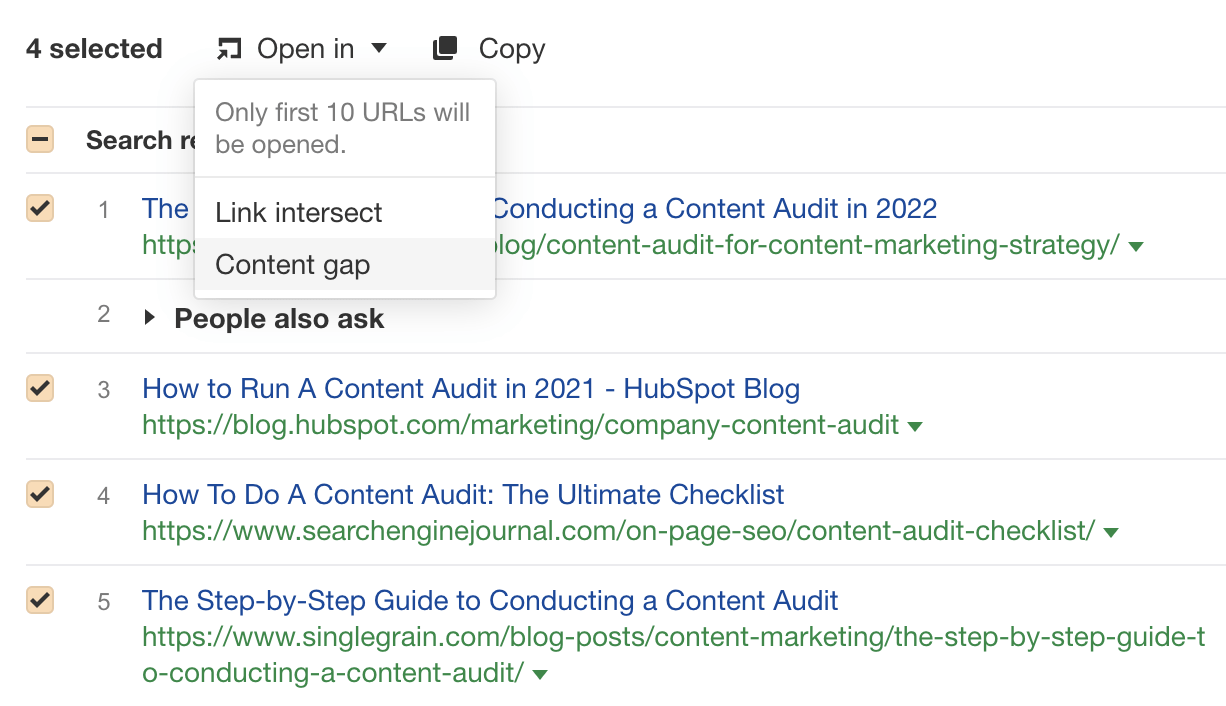
For example, say our target keyword was “content audit.” If we plug a few top-ranking pages into Content Gap, many keywords map to subtopics.
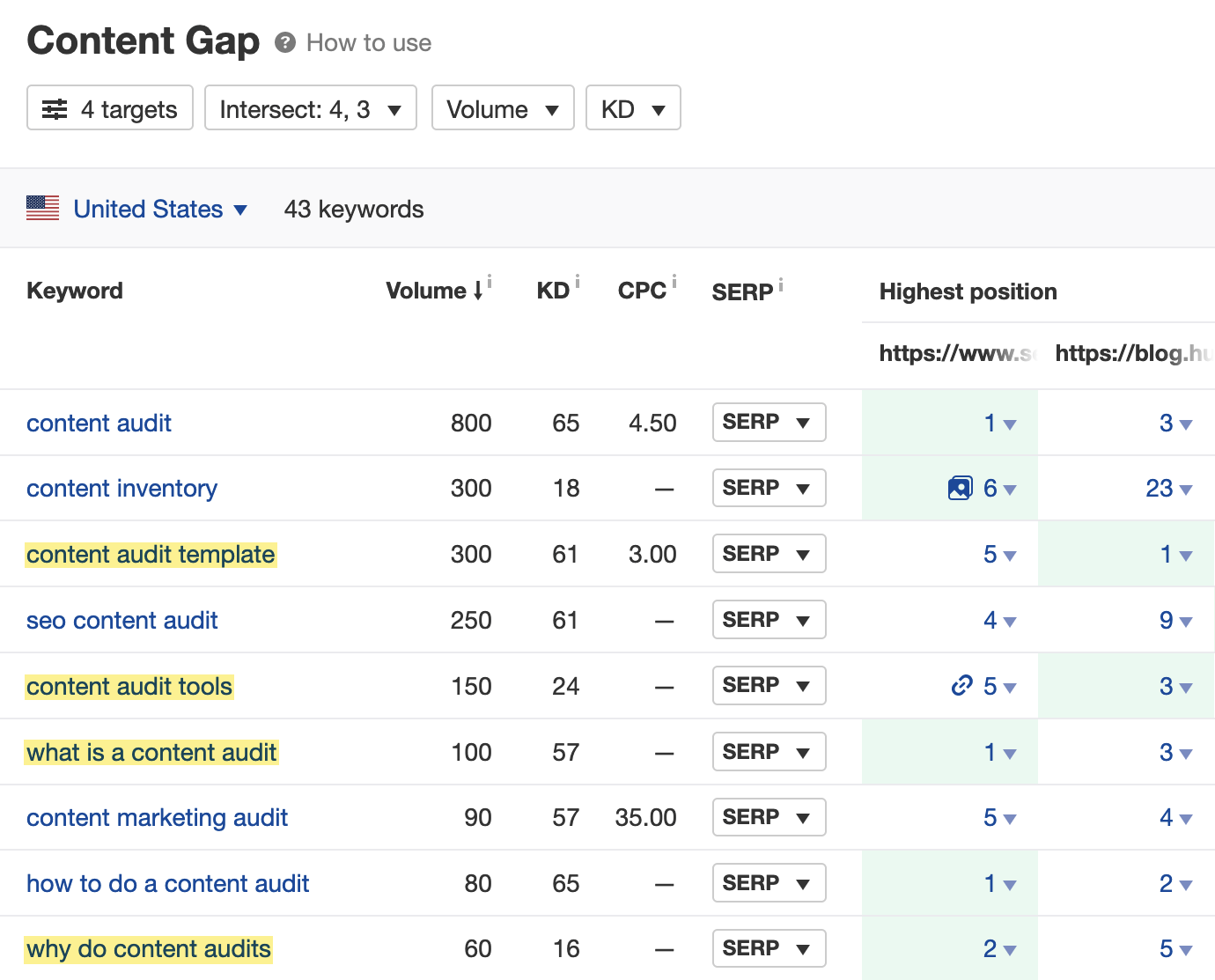
It’s clear that searchers want to know not only how to do a content audit, but also:
- what one is.
- why they should do one.
- template.
- tools they need.
5. Make it unique
If you base the entirety of your content on top-ranking pages, you’ll end up with copycat content. This content fails to stand out from the crowd or offer anything unique.
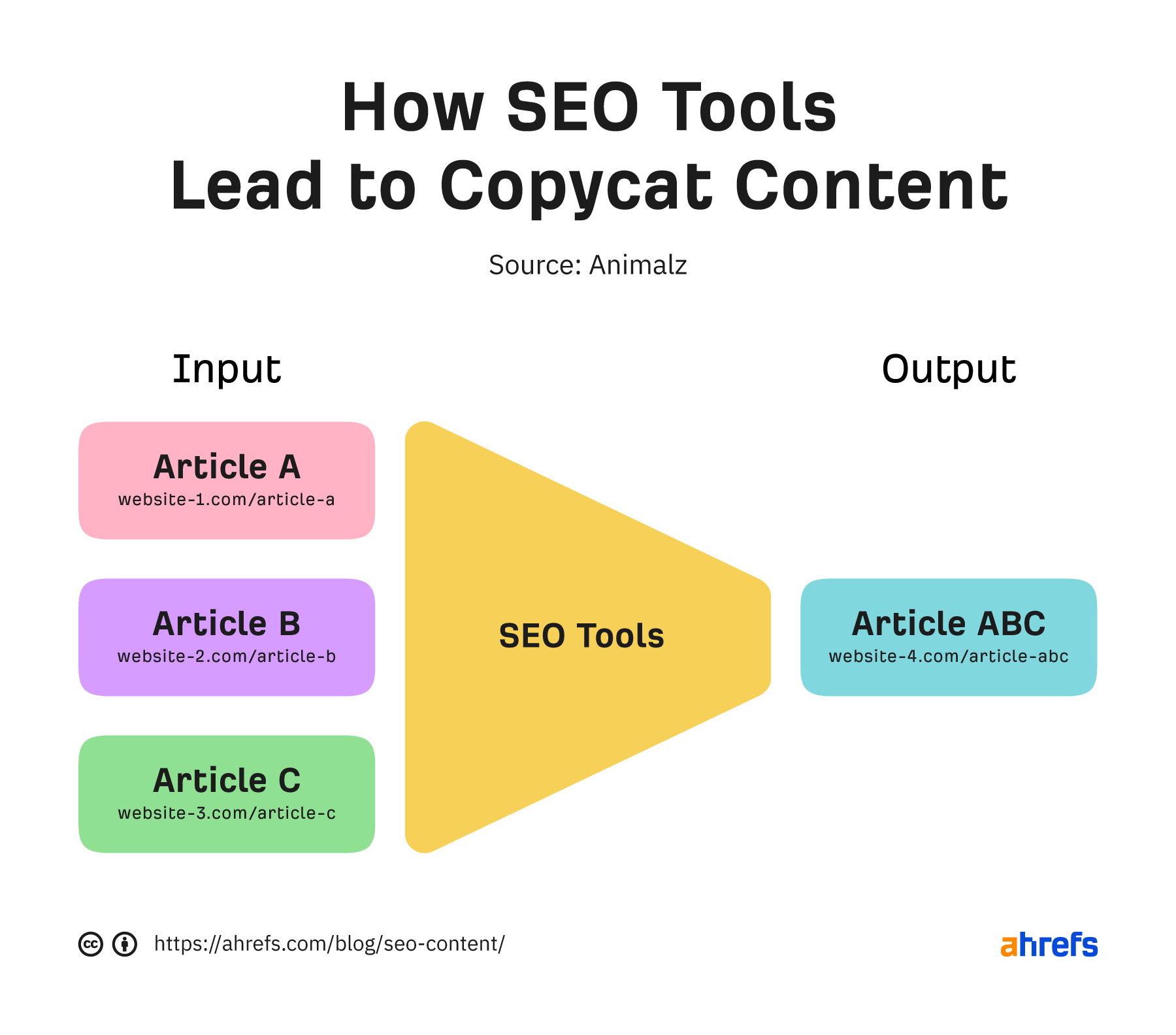
Copycat content is a problem for SEO because people have no incentive to link to it. And links are important because they’re a ranking factor.
Here are a few ways to solve this problem:
- Provide original research. Polls, surveys, studies—they all work.
- Give a unique perspective or opinion. This can come from you, someone in your organization, or an industry expert.
- Build on what’s already out there. Expand on key ideas, go deeper, and give alternatives.
If you use the Best by links report in Ahrefs’ Site Explorer to see our most linked blog posts, most of them are studies. This shows just how effective original research can be for earning backlinks in our industry.

Another tip is to look at why people link to top-ranking pages.
For example, we found links to a competing page about SEO copywriting thanks to a formula coined by the author. So we created our own called the ASMR formula for our post. It’s already earned us a few links.
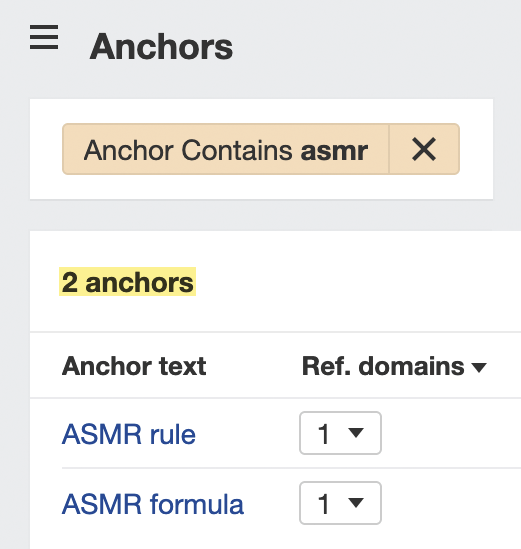
DID YOU KNOW?
Google is aware of the issues with copycat content. They even filed a patent in 2020 with a potential solution. It’s called Contextual Estimation of Link Information Gain.[3] It presents a solution whereby documents are given information gain scores. These state how much more information one source may bring to a person who has seen other sources on the same topic.[4]
6. Make it “sticky”
People aren’t going to stick around for something they find confusing or hard to read. That’s bad because Google uses interaction data to assess relevance. If searchers abandon your content like the Titanic, that’s unlikely to help SEO.
Here are a few tips for making content more “sticky”:
- Keep it simple. Avoid complex words and sentences.
- Make it visual. Break up walls of text with images and videos.
- Speak your audience’s language. Use terms and jargon that resonate with readers.
- Boss your spelling. Run a spell check; it makes all the difference.
Tools like Hemmingway and Grammarly can help with simplification and spell checks. If you’re curious what kind of language and terms your audience might use, try this:
- Enter your keyword into Ahrefs’ Keywords Explorer
- Go to the Related terms report
- Click the “Also talk about” toggle
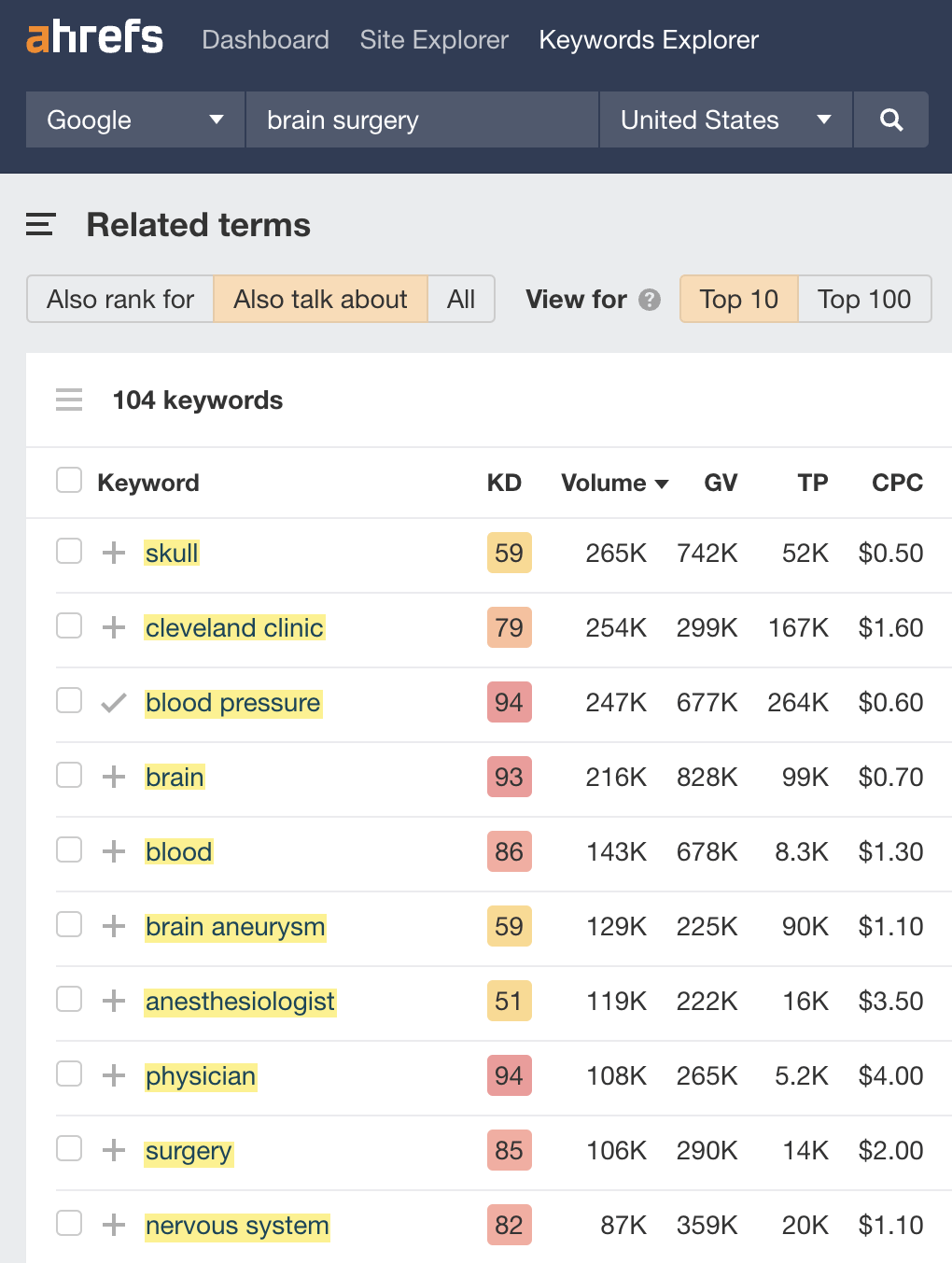
7. Keep it evergreen
Content doesn’t stay fresh forever. That’s an issue if you’re targeting a fast-moving topic. It means you’ll have to work to keep your content updated to keep Google and searchers happy.
For example, the estimated traffic trend for our list of top Google searches goes up and down.
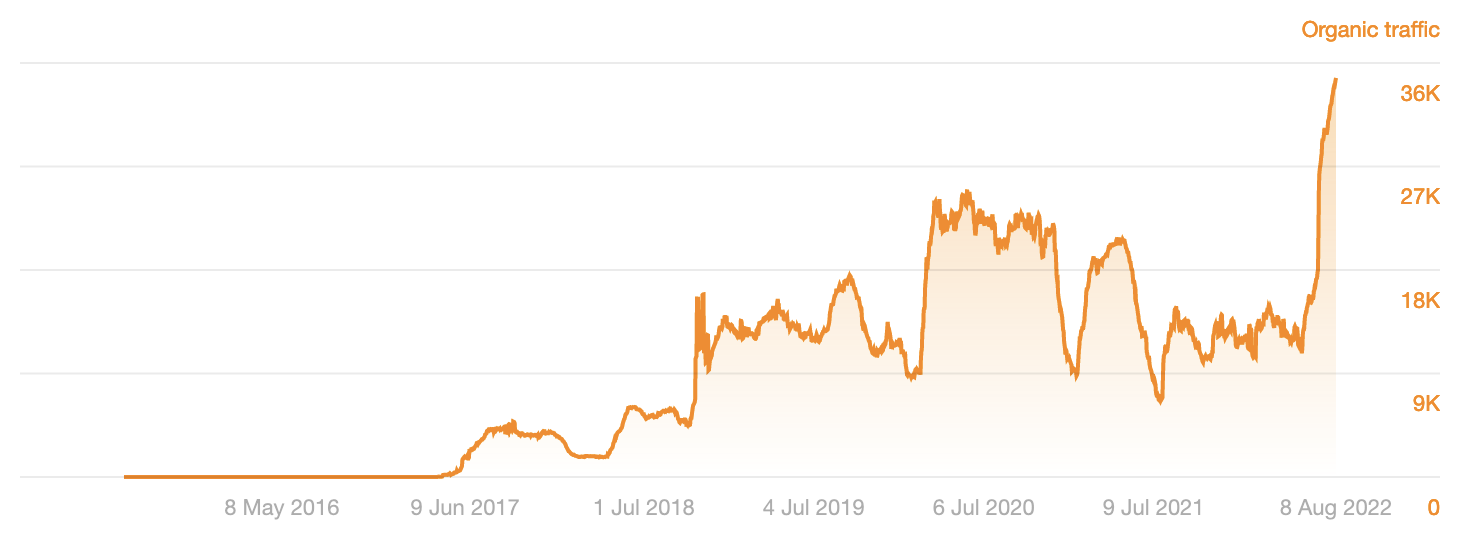
This happens because the topic demands fresh content. Searchers don’t want a list of the top Google searches from yesteryear; they want something up to date. Each dip happened when our content became stale, and each rise happened when we updated the page.
If you’re a WordPress user, you can keep an eye on declining rankings with our free WordPress SEO plugin. Just set a target keyword for each page, and it’ll tell you if rankings start to tank. You can then investigate whether this is because the content needs refreshing.
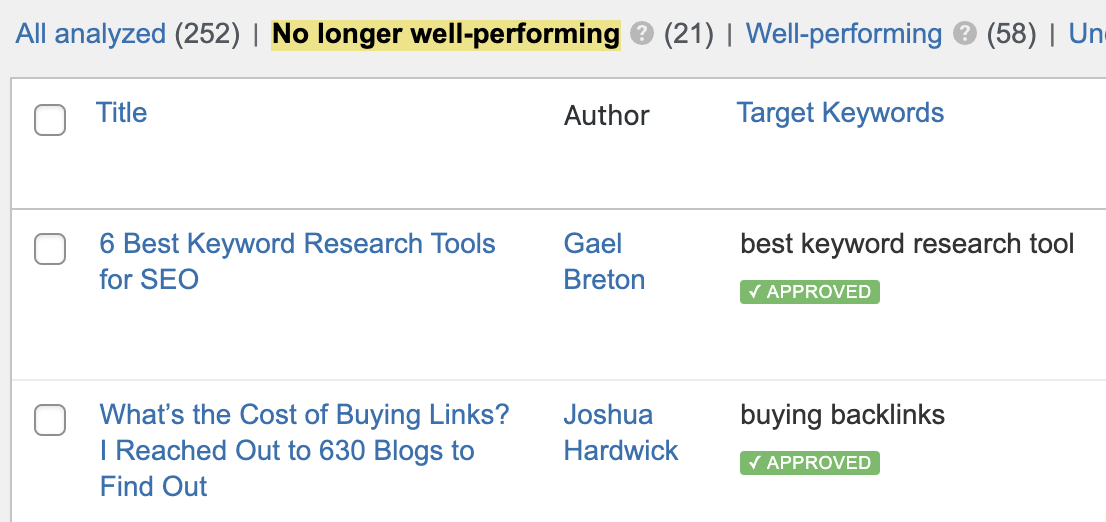
Key takeaways
- SEO content is content designed to rank in search engines like Google.
- It’s all about giving searchers what they want and making it as “sticky” as possible.
- Unless you do this, your content probably won’t rank.
References
- “Ranking Results — How Google Search Works”. Google. Retrieved 17th August 2022
- “Search Quality Evaluator Guidelines” (Pages 11, 23, 30, ). Google. Retrieved 17th August 2022
- “Contextual estimation of link information gain”. WIPO IP Portal. April 4th 2020.
- Bill Slawski. “Ranking Search Results based on Information Gain Scores”. Go Fish Digital. June 15th 2020. Retrieved 17th August 2022
